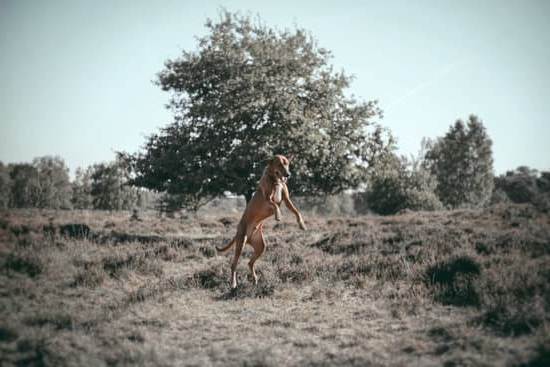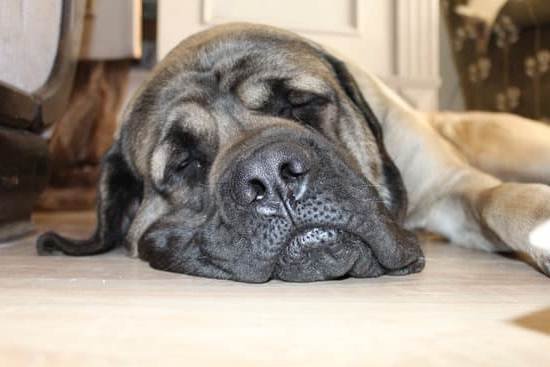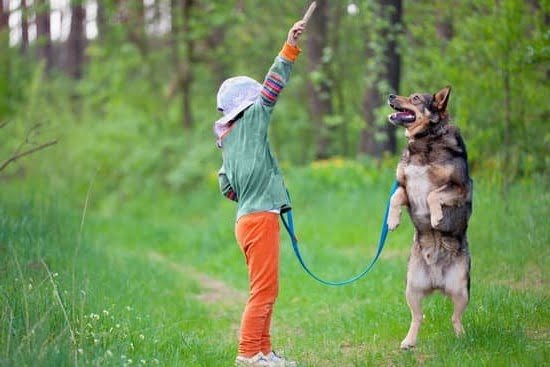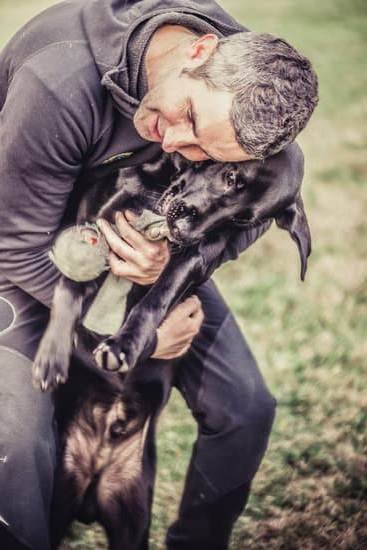Are you looking for a fun and engaging way to bond with your furry pal? If so, learning how to start training your dog for agility can be a rewarding experience for both you and your canine companion. Agility training involves guiding your dog through various obstacles, such as jumps, tunnels, and weave poles, in a timed course. It not only helps keep your dog physically fit but also mentally stimulated.
To begin agility training with your dog, it is crucial to understand the basics of this exciting sport. Agility training is not just about running an obstacle course; it requires teamwork between you and your dog. By developing clear communication and trust with your pet, you can navigate through the challenges of agility training effectively. Additionally, patience, consistency, and positive reinforcement play key roles in shaping your dog’s agility skills.
When starting out with agility training, selecting the right breed is essential. While dogs of all breeds can participate in agility, some are naturally more inclined towards this activity due to their athleticism and energy levels. Breeds like Border Collies, Australian Shepherds, and Jack Russell Terriers are commonly seen excelling in agility competitions. However, any dog with the right temperament and willingness to learn can enjoy agility training with proper guidance and practice.
Choosing the Right Breed for Agility Training
When it comes to training your dog for agility, one of the key factors to consider is choosing the right breed. Not all dogs are well-suited for agility training, as certain breeds have a natural inclination towards this high-energy and physically demanding activity.
Breeds such as Border Collies, Australian Shepherds, Jack Russell Terriers, and Belgian Malinois are known for their agility prowess. These breeds are typically highly intelligent, agile, and have a strong drive to work and please their owners.
If you already have a dog but are unsure if they are suitable for agility training, don’t worry. Mixed breed dogs can also excel in agility with the right training and guidance. While certain breeds may have a genetic predisposition towards agility, any dog can participate in this sport with proper conditioning and training techniques. It’s essential to assess your dog’s physical abilities, temperament, and willingness to learn before embarking on an agility training journey.
To start training your dog for agility, begin by researching the specific requirements of the sport and evaluating whether your dog meets those criteria. Consult with experienced trainers or attend introductory classes to get a feel for what is involved in agility training. Remember that patience, consistency, and positive reinforcement are key components of successful training. With dedication and commitment, you can help your dog develop the skills needed to navigate obstacles with speed and precision on an agility course.
| Choosing the Right Breed | Key Considerations |
|---|---|
| Border Collie | Highly intelligent and agile; strong work drive |
| Australian Shepherd | Energetic and responsive; excels in obedience tasks |
| Mixed Breed Dogs | Potential for success with proper training; diverse abilities |
Setting Up a Training Area at Home
When starting to train your dog for agility, one of the key aspects to consider is setting up a proper training area at home. This will provide a dedicated space where you and your furry companion can practice agility exercises and routines. Here are some tips on how to create an effective training area at home:
- Choose a spacious and safe area: Look for a flat area in your backyard or even indoors where there is enough room for your dog to run around freely without obstacles in the way.
- Invest in basic agility equipment: Start with simple equipment such as cones, tunnels, hurdles, and weave poles that you can easily set up in your training area. This will help familiarize your pup with the different obstacles they may encounter in actual agility courses.
- Create a positive environment: Make sure the training area is free from distractions and noise that may disrupt your dog’s focus. Use treats, toys, or praise as positive reinforcement during training sessions to motivate your dog.
To start training your dog for agility at home, it’s important to have a designated space where you can practice regularly. By following these guidelines and providing a conducive environment for learning, you’ll be well on your way to enjoying the exciting journey of agility training with your canine companion.
Basic Obedience Training as a Foundation
Teaching Basic Commands
Before diving into agility training, it is essential to establish a strong foundation of basic obedience commands with your dog. Commands such as sit, stay, come, and heel are crucial for ensuring safety and control during agility sessions. Use positive reinforcement techniques like treats, praise, and clicker training to motivate your dog to learn and obey these commands consistently. Consistent practice and patience are key to mastering these basic skills before moving on to more advanced agility training.
Focus on Communication and Bonding
Basic obedience training not only helps in preparing your dog for agility but also strengthens the communication between you and your furry companion. By establishing clear communication through commands and cues, you will build a deeper bond based on trust and understanding.
Spend quality time practicing obedience commands with your dog to create a strong foundation of mutual respect and cooperation. This solid relationship will be essential when transitioning to agility training, as it requires teamwork and synchronization between you and your dog.
Transitioning to Agility Training
Once your dog has mastered basic obedience commands and shows enthusiasm for learning, it’s time to gradually introduce agility training into your routine. Start by incorporating simple agility equipment like tunnel or hurdles in a familiar environment where your dog feels comfortable. Use the basic commands they have learned to guide them through the obstacles while praising their efforts.
With patience and consistency, gradually increase the complexity of the challenges to keep your dog engaged and motivated. Remember that positive reinforcement is key in building confidence and enjoyment in agility training sessions with your furry friend.
Introducing Basic Agility Equipment and Commands
Introducing your dog to basic agility equipment and commands is a crucial step in their agility training journey. Here are some tips on how to start incorporating these elements into your training sessions:
- Start with simple obstacles: Begin by introducing your dog to basic agility equipment such as tunnels, jumps, and weave poles. Use treats and positive reinforcement to encourage them to navigate through these obstacles.
- Teach essential commands: Commands like “tunnel,” “jump,” and “weave” will be essential for guiding your dog through the agility course. Make sure your dog understands and responds to these commands consistently.
- Practice regularly: Consistent practice is key to building your dog’s confidence and skills. Set aside regular training sessions to work on different agility obstacles and commands.
Once your dog becomes comfortable with basic agility equipment and commands, you can start incorporating more challenging elements into their training routine. Remember that patience, consistency, and positive reinforcement are key factors in successful agility training.
Building Confidence and Trust With Your Dog
Establishing a strong bond of trust and confidence with your dog is vital for their success in agility training. Here are some tips on how to strengthen this bond:
- Positive reinforcement: Use treats, praise, and rewards to motivate your dog during training sessions. This positive reinforcement will help build trust between you and your furry companion.
- Consistency: Be consistent in your training approach, commands, and expectations. Dogs thrive on routine, so maintaining consistency will help them feel more secure during training.
- Patience: Agility training can be challenging for both you and your dog, so it’s important to remain patient throughout the process. Celebrate small victories and progress, even if it takes time.
By focusing on building confidence and trust with your dog while introducing basic agility equipment and commands, you will set a solid foundation for their agility training journey. With time, practice, and dedication, you’ll be amazed at how far you both can progress in the world of canine agility.
Building Confidence and Trust With Your Dog
Training your dog for agility is not just about physical skills, but also about building a strong bond with your furry companion. Building confidence and trust with your dog is essential for successful agility training. Dogs who trust their owners are more likely to follow commands and tackle obstacles with enthusiasm.
Positive Reinforcement Training
One of the best ways to build confidence and trust with your dog during agility training is through positive reinforcement. Using treats, toys, praise, and other rewards can help create a positive association with training. When your dog successfully completes a task or obstacle, reward them immediately to reinforce good behavior. This will not only boost their confidence but also strengthen the bond between you and your pet.
Consistency and Patience
Consistency is key when it comes to building confidence and trust with your dog. Make sure to set aside time each day for training sessions, even if they are brief. Keep commands consistent and use the same cues each time to avoid confusion. Be patient with your furry friend as they learn new skills and obstacles – remember that agility training is a journey that takes time and dedication.
Building Trust Through Communication
Communication is vital in building trust with your dog during agility training. Pay attention to your pet’s body language, vocalizations, and reactions to understand how they are feeling during training sessions. Use clear communication techniques such as verbal cues, hand signals, and body language to guide your dog through obstacles effectively. The better you communicate with your pet, the stronger the bond of trust you will build together throughout the agility training process.
Progressing to Advanced Agility Training Techniques
Once your dog has mastered the basic agility training techniques, you can begin to introduce more advanced methods to challenge and improve their skills. One important aspect of advancing in agility training is incorporating more complex courses and obstacles. This could include tunnels, weave poles, A-frames, and more demanding jumps. Introducing these new elements gradually will help your dog adapt and continue to grow in their agility abilities.
In addition to adding complexity to the obstacles, you can also focus on refining your dog’s technique and speed during training sessions. This may involve practicing specific handling techniques, such as front crosses, rear crosses, and blind crosses, to navigate courses efficiently. Consistent practice and repetition will help your dog develop muscle memory for executing these maneuvers effectively.
Moreover, as you progress to advanced agility training techniques, it is essential to maintain a positive and rewarding training environment for your dog. Utilizing positive reinforcement methods like treats, toys, or praise will motivate them to perform at their best.
Remember that patience and consistency are key when teaching your dog new skills in agility. By building on the foundation of trust and confidence established in earlier training stages, you can guide your furry companion towards becoming a skilled agility competitor.
| Advanced Agility Training | Techniques Overview |
|---|---|
| Incorporate complex obstacles: tunnels, weave poles | Challenge and improve skills |
| Focus on refining technique: front crosses, rear crosses | Enhance navigation efficiency |
| Maintain positive environment: use rewards like treats | Motivate dogs for peak performance |
Participating in Competitions and Events
Once you have laid down the foundation and mastered basic agility training techniques with your dog, it may be time to consider taking your skills to the next level by participating in competitions and events. This step can be a fun and rewarding experience for both you and your furry companion.
Attending these events not only allows your dog to showcase their agility skills but also provides an opportunity for you to connect with other like-minded dog owners who share the same passion.
Before diving into competitive agility, it is important to do some research on local competitions and events in your area. Look for organizations or clubs that host agility trials suitable for beginners, where you can ease into the competition scene.
These events often offer different classes based on skill levels, allowing you to gradually progress as you and your dog become more experienced. Additionally, attending these trials can help you gain valuable insights from seasoned competitors and trainers on how to further improve your training techniques.
During competitions, remember that it is normal to feel nervous or overwhelmed at first. However, staying calm and focused will help create a positive experience for both you and your dog. Make sure to practice good sportsmanship, cheer on fellow competitors, and most importantly, have fun with your canine partner.
Remember that the journey towards becoming successful in competitive agility is a process that requires patience, dedication, and continuous learning. So go out there, enjoy the experience, and celebrate the bond that you have built with your four-legged friend through agility training.
Tips for Maintaining Your Dog’s Agility Skills
After putting in the time and effort to train your dog for agility, it’s important to consistently work on maintaining their skills. Agility training is not a one-time activity but a continuous process that requires dedication and practice. Here are some tips to help you keep your dog in top shape for agility competitions:
Consistency is key when it comes to maintaining your dog’s agility skills. Schedule regular training sessions to keep your dog sharp and focused on their agility tasks. Even short 10-15 minute sessions a few times a week can make a big difference in keeping your dog’s skills honed.
Incorporate variety into your training routines to prevent boredom and keep your dog engaged. Mix up the agility equipment used, introduce new commands or challenges, and vary the training environment. By keeping things interesting and exciting for your dog, you can ensure they stay motivated and eager to continue their agility training journey.
Regular exercise and physical conditioning are essential for maintaining your dog’s agility skills. Keep them physically fit by incorporating activities like running, swimming, hiking, or playing fetch into their routine. A strong and healthy body is crucial for excelling in agility courses, so make sure to prioritize your dog’s physical well-being alongside their training sessions.
By following these tips for maintaining your dog’s agility skills, you can continue to enjoy the bond you’ve built through training while also helping them reach their full potential in agility competitions. Remember that patience, consistency, and positive reinforcement are key components of successful agility training with your furry companion.
Conclusion
In conclusion, embarking on the journey of agility training with your dog can be a rewarding and fulfilling experience for both you and your furry companion. By following the steps outlined in this guide, you can start training your dog for agility in a structured and effective manner. Remember that consistency, patience, and positive reinforcement are key elements in successfully training your dog for agility.
As you progress through the different stages of agility training, from setting up a training area at home to participating in competitions and events, it is important to always prioritize your dog’s well-being and enjoyment. Building a strong foundation of basic obedience skills, introducing agility equipment gradually, and fostering trust and confidence between you and your dog are crucial steps in creating a successful agility team.
Ultimately, celebrating your dog’s agility journey is about recognizing the hard work and dedication that both you and your canine partner have put into honing their skills. Whether you are competing in agility trials or simply enjoying some fun exercises at home, the bond that develops through this shared experience is invaluable.
So go ahead, take the leap into the world of agility training with your four-legged friend, and revel in the joy of watching them showcase their speed, skill, and enthusiasm on the agility course.
Frequently Asked Questions
How Old Should a Dog Be to Start Agility Training?
The ideal age to start agility training for a dog is around one year old. It’s important to wait until the dog’s growth plates have closed to prevent any potential injury during training.
How Long Does It Take to Train a Dog to Compete in Agility?
The time it takes to train a dog to compete in agility can vary depending on the dog’s breed, age, and individual temperament. On average, it can take several months to a year of consistent training to prepare a dog for competition.
Can You Teach Your Dog Agility at Home?
Yes, it is possible to teach your dog agility at home with the right resources and guidance. There are plenty of tutorials, books, and online courses available to help dog owners introduce their pets to agility training in their own backyard.

Welcome to the blog! I am a professional dog trainer and have been working with dogs for many years. In this blog, I will be discussing various topics related to dog training, including tips, tricks, and advice. I hope you find this information helpful and informative. Thanks for reading!





